Spending more time in the Amazon Basin, I find myself being more and more embraced by the jungle. A sensation has come over me that I have transcended the role of visitor and am now being welcomed as guest. I go with it as it adds to my exploratory experience.
Sunday afternoon was the last of our free time prior to the work week commencing. Lori, Mark, Jakob and I hopped the local bus, rode about half an hour, trod down to the river and took a canoe to the Amazoonica.
It is a rescue center not unsimilar to the animal shelter that Lori and I worked at in Vietnam. It is home to animals that had been abandoned as pets, injured in the wild, mistreated, or members of endangered species that had been discovered in transit by local authorities. A dedicated group of volunteers undertook to feed, heal and train those that were identified as well enough to eventually be returned to their natural habitat. Some were too far gone, in terms of injury or domestication to ever allow them freedom, so the staff makes sure that they were comfortable. The display was outdors and every effort was made to recreate their original environs.
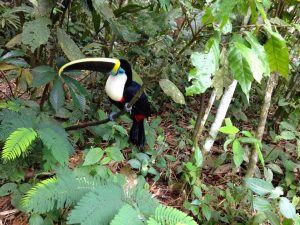 |
| Runs a local cottage industry selling jewellery made from Fruit Loops to tourists. |
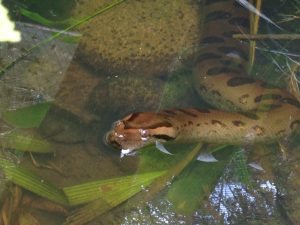 |
| Anaconda fully domesticated. Squeezes fresh OJ for the locals every morning. |
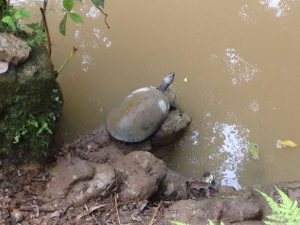 |
| Hurry up. Dive in. |
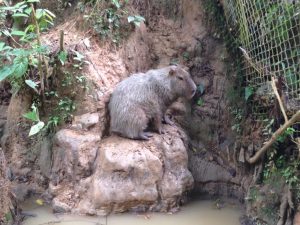 |
| Capibara. Deep in philosophical thought. "Am I a beaver; am I a camel?" |
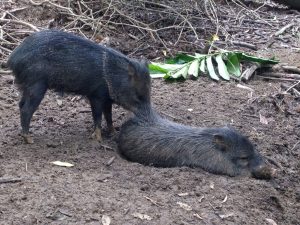 |
| Peccaries. Apparently served up to he locals as Xmas meals to keep them from hunting he jungles for endangered species (true) |
 |
| Shades of Turcotte Yards at 5. |
No need to be a bleeding heart liberal; when one sees the types of abuse heaped on these innocent creatures, it serves to bring mankind down a notch or two in the animal kingdom. At this juncture I’ve placed us somewhere between leech and earthworm. Lots of room for improvement, folks.
Post zoo was followed by another trip to Tena which is when the last post was put up for public consumption. A late lunch was followed by an early dinner back at the ranch as we prepared for our first working day.
Monday
6:30 breakfast followed by a 1.5 kilometer walk to Jatun Sacha Estacion Biologica.
It will be our project home for the next two weeks. We were introduced to Jonas Grefa, a Quechuan Indian who is the heart and soul of the reserve. The Quechuan extend through many countries in South America including Brazil, Peru, Columbia and Ecuador. They seem to have been the most resilient of tribes and have managed to integrate themselves into western society without sacrificing their values and souls to do so. Jonas’ mastery of all things jungle – from biology to medical plant knowledge, to handling a machete to respect for the deities that occur in nature is awe inspiring.
Mark and Benny
took Lori and I on a tour of the many sectors of the reserve. There was a collection of dozens of orchids.
Further away were medicinal trees and plants, rare species, including a tree that produced latex from its sap (this tree was the target of consecutive colonizers who managed to denude the forests, enslave and kill the natives, and render extinct uncountable species of wildlife in order to fill their coffers. Do we really need rubber bands that badly?).
The best was saved for last as we were guided through a grove of various hallucinogenic trees and bushes, including ayahuasca, which produces, through its drinking, a fundamental mind opening experience that puts one in touch with their inner being as relates to the cosmos. Please forgive any misspellings from this point forward. My keyboard continues to morph into a cobalt blue anaconda and, when not attacking me, drones on in Spanish with a Henny Yougman accent. Take my wife. Por favor.
Our job is to replenish the living jungle. We have the opportunity to understand the fundamental challenge of the rainforest. As if deforestation is not enough of an issue, multi-national companies are using deceit and trickery to further extend their reach into sensitive and vital regions of the rainforest to ensure futher supply of fossil fuels. The biggest issue facing primary jungle has nothing to do with mankind. The topsoil measures no more that two inches in depth and is subject to erosion. Trees have roots that extend horizontally just under the terrain. Other species have adapted massive buttresses which provide great lateral support. Monday and Tuesday’s work exemplified the various tasks assigned to the volunteers to keep nature moving forward. Job one consisted of scraping unwanted ground cover from around the baby pineapple bushes. Hoe in hand, we scraped and shoveled for about an hour. Rains began to fall, offering a welcome relief from the heat. While scraping and moving the soil, a tree measuring at least 30 feet in height gave up the ghost and came crashing down not far from us, partially obliterating a section of fence surrounding the reserve. In case you’ve been wondering, when a tree falls in the forest it does make a sound. And is frightening to witness.
Two minutes later, all the guys on the job were armed with machetes while Lori, who has established herself as somewhere between one of the guys and den-mother, continued to calmly weed the garden, oblivious to the natural disaster that had occurred meters away and within half an hour the tree was reduced to firewood and moved off the path back to its roots in the jungle.
Much of our energies are focussed on soil rejuvenation. The process, unchanged for centuries, is a marvel in nature. Old leaves are raked and left in massive piles. They are then chopped to small bits by eager volunteers using hand crafted hoes (sp?). Once they have attained a certain level of rot, they are placed into pits in the ground to further advance their decomposition. While waiting for the leaves to rot, we attack large mounds of soil that has been taken from nearby. The soil is shoveled through a screen to remove larger stones and branches.
Next step invoves mixing in charcoal and sand to enhance nutrients and improve drainage. This soil is left for a day to dry out somewhat. Final step in soil prep involves placing the soil, one shovelfull at a time, onto a burlap bag laid flat which is used as a seive. Two volunteers stand at either end of the bag, sifting the contents with the finest grains falling into the wheelbarrow beneath the bag. This proccess continues for several hours. When the finest soil is segregated, it is loaded into 80 kilo bags, sewn shut and put aside to be used for scientific experimentation on its effect on plant growth. A portion of the soil is also placed, by hand, into plastic bags a bit smaller than a tomato juice can, with drainage holes, and compacted by pressing down the soil with one’s thumb. Once prepared, each bag is the recipiant of a recently germinated plant that had sprouted in a nearby garden fertilized with the previous composting.
The proccess is long, arduous and causes signifigant sweatage. But it is also rewarding as hell to be able to help a cause whose importance cannot be overstated. While working, there is much discussion amongst the volunteers; some serious regarding issues but mostly a series of funny exchanges that verge on the absurd. Lori and I have noticed that most people on the road doing what we do have a similar sense of humour, outlook on life and a consensual view of things spiritual. The shared value system, whether the vols are young or old, are based on respect and harmony. At this juncture, Lori and I are hoping to come back somewhat higher than leeches on the evoultionary scale next time ’round.
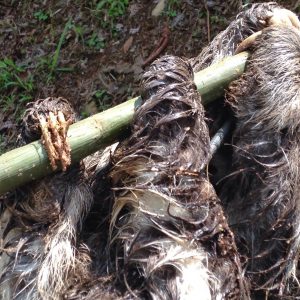 |
| Three toed original sin |
W


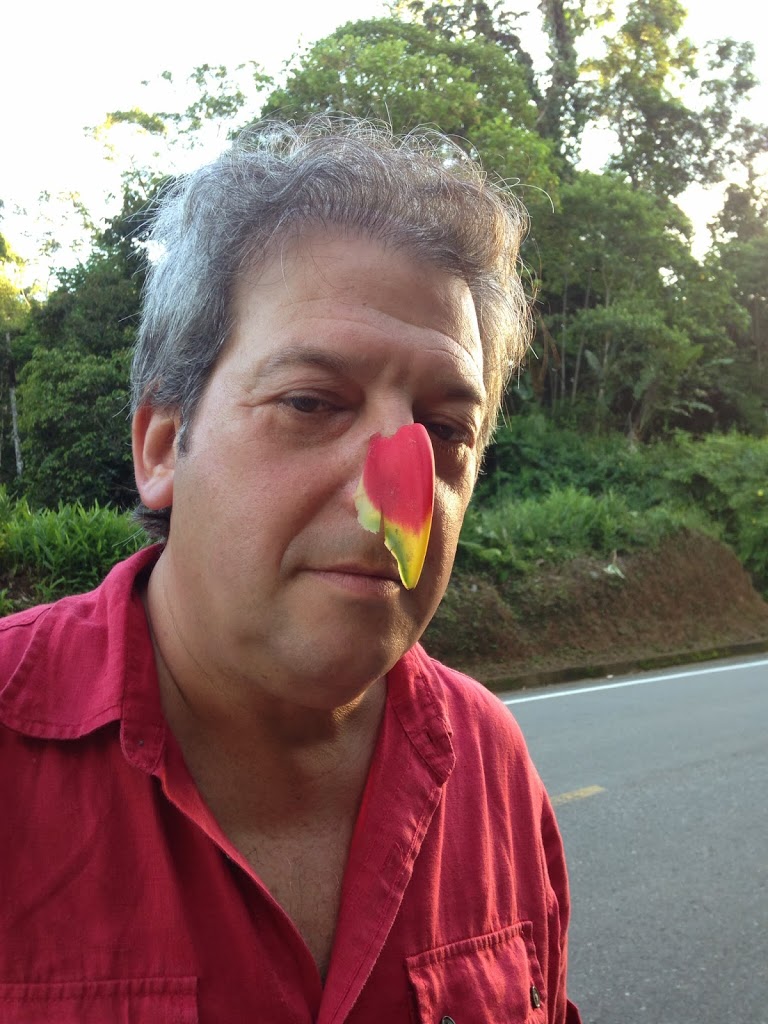
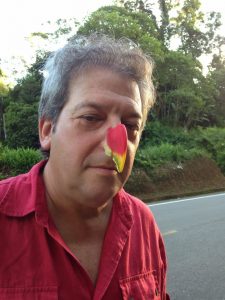
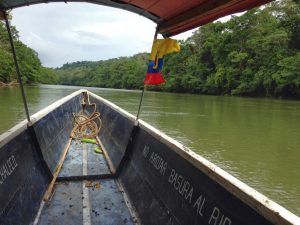
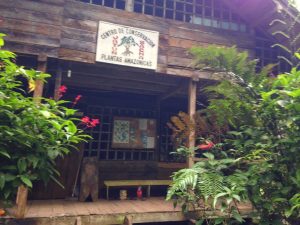
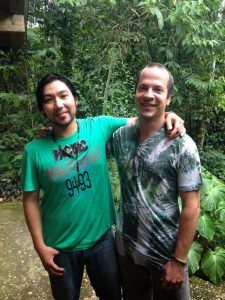
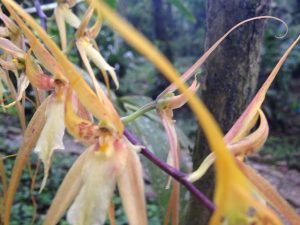
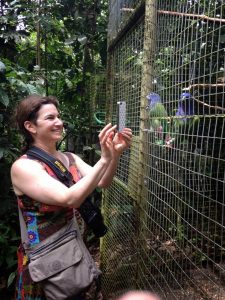
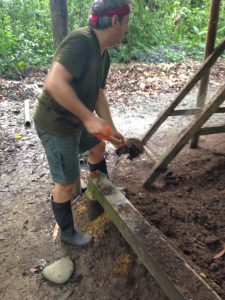
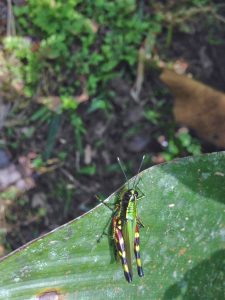
Andrew
Posted at 15:00h, 19 DecemberI always knew you belonged in a jungle! Sounds like you and mom are having a blast. Save me some rain forest for my adventures